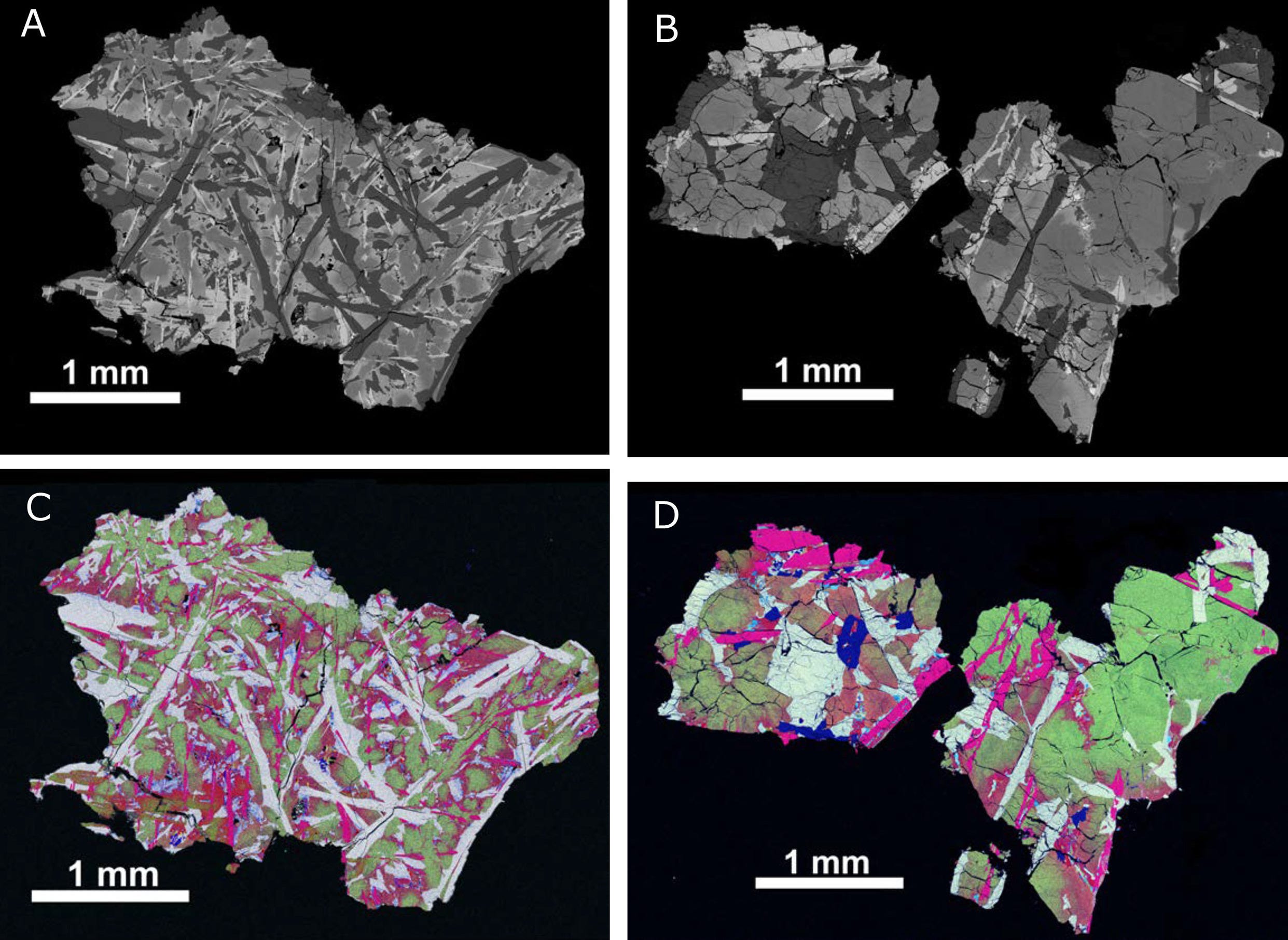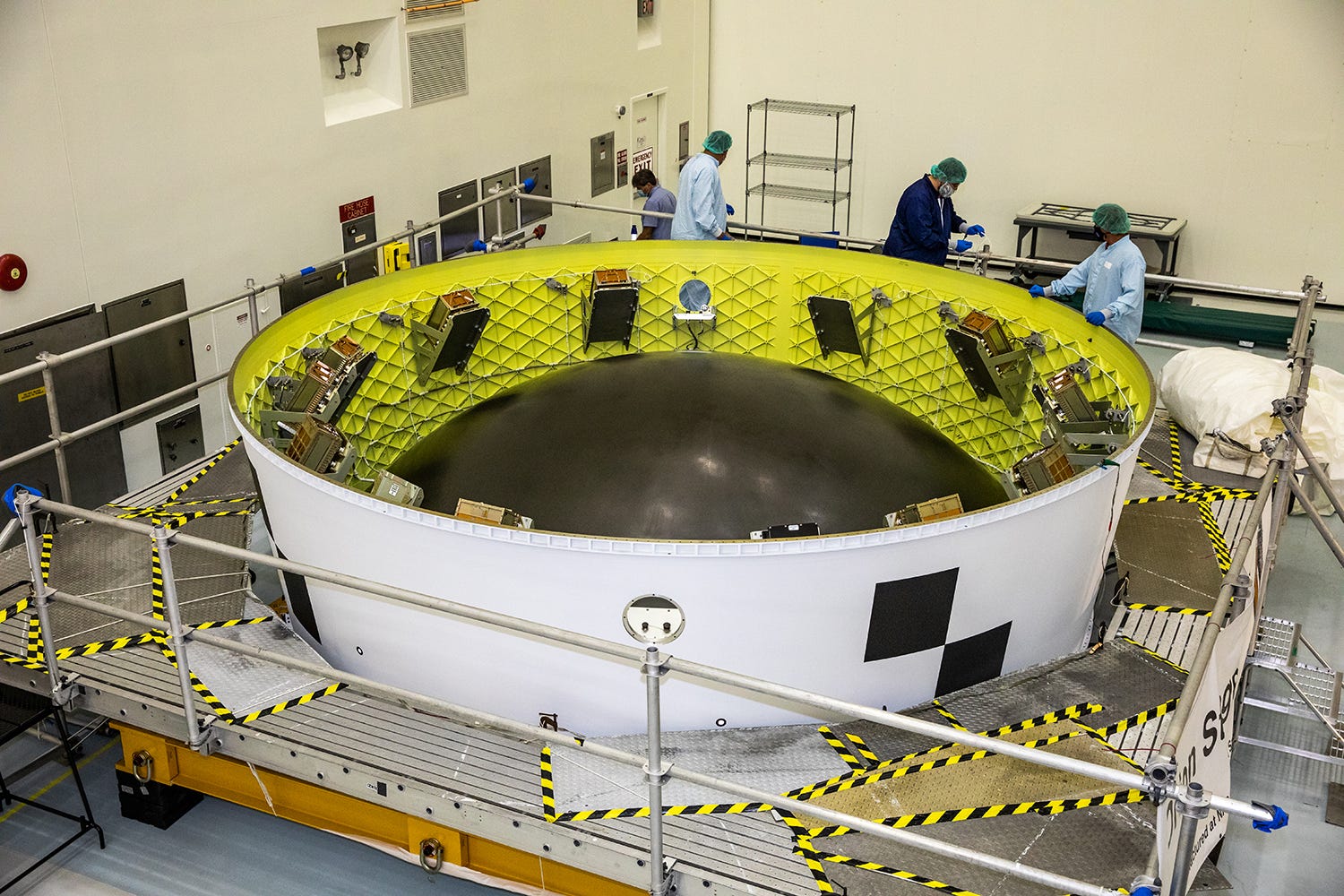Moon Monday Issue #48
Chang'e 5 samples confirm the Moon was volcanically active 2 billion years ago, NASA passes key milestones before Artemis I launch, Airbus & Mexico team up to extract lunar resources, & more updates.
Highlight
The most awaited result from China’s Chang’e 5 mission, which brought 1.73 kilograms of samples from near a volcanic dome on the Moon, is here. Just 3 months after China distributed 17 grams of samples to researchers, one of the groups has determined the age of basalt fragments from the sampled region to be around 1.96 billion years. That confirms the Moon was volcanically active at the time. It also makes Chang’e 5 samples the youngest ones collected to date, postdating the youngest Apollo and Luna samples by almost a billion years.

When researchers analyzed the composition of these basaltic Chang’e 5 samples, they turned out to have a lower abundance of heat-producing elements such as uranium, potassium, thorium, etc. than scientists expected. The idea was that these heat-providing elements would have kept volcanism on the Moon alive for over a billion years after peak volcanism ended over 3 billion years ago. That begs the question: How did the now-older and colder Moon keep spewing lava? More results from ongoing research, including the upcoming distribution of a second set of Chang’e 5 samples, and future sampling missions will inform us of this period in the Moon’s thermal and evolutionary history.
The scientific value of the Chang’e 5 samples isn’t limited to the Moon. Scientists use precise ages of lunar places or regions determined from such samples to calibrate the ages of features on other solar system worlds such as Mars, Mercury, and the icy moons. Chang’e 5 samples will thus help refine our understanding of the chain of key events in our solar system.
Related: In an open access paper, Chinese scientists have provided juicy details and diagrams on the Chang’e 5 guidance, navigation and control system used to successfully execute the complex, robotic sample return mission.

Exploration
NASA has completed the design certification review (DCR) for the huge SLS rocket ahead of the Artemis I mission to send an uncrewed Orion spacecraft around the Moon. The review throughly examined all systems of the rocket, data from its tests and inspections, and analyses that support its verification. With the design certification for Orion and the new Launch Control Center previously done, NASA is now proceeding to finish integrating the SLS rocket, then move to the Flight Readiness Review, followed by launch sometime in the first half of 2022. Related: NASA also completed wind tunnel testing of heat shield components of Orion.
Also related: Post-launch of Artemis I, the SLS rocket’s second stage will push the connected Orion spacecraft out of Earth orbit and on a trajectory to the Moon. It’ll then separate from Orion, and deploy 13 small spacecraft on independent scientific missions. After recently integrating nearly all of those shoebox-sized satellites on the top adapter part of the second stage, NASA has now joined the BioSentinel satellite too. Since it’s the only mission payload with living microorganisms, the latter were refrigerated for as long as possible before integrating the satellite in order to best preserve them. NASA is yet to officially announce the integration status of 2 of the 13 satellites, CU-3E and Lunar Flashlight, which weren’t delivered to NASA as of August and were being considered to be left out of Artemis I.

About BioSentinel: It will be the first small satellite to perform a biological experiment in deep space. It will enter solar orbit, and measure the impact of space radiation on yeast over 6 months. The researchers chose yeast because their cells and human cells have many similar DNA damage and repair mechanisms. Earth-bound research can’t fully simulate the unique radiation environment of deep space so this study will provide us new insights on the deep space radiation effects on biological life as NASA seeks to establish long-term human exploration of the Moon with its Artemis program.
Airbus has signed a memorandum of understanding with the Mexican Space Agency and Mexican startup Dereum Labs to collaborate on technologies for extracting lunar resources such as soil and water ice for future lunar infrastructure, air, and fuel needs. Dereum Labs is developing swarms of low-cost, modular rovers to map lunar resources whereas Airbus is making technologies to extract and covert those resources using its ROXY system. This collaboration is part of Mexico’s new In-Situ Resources Utilisation (ISRU) program to indigenously develop said technologies.

ISRO continues to withhold any substantial information on the upcoming Q3 2022 Chandrayaan 3 Moon landing mission. When Twitter user @frustratedpluto submitted several questions to ISRO under the Indian Right to Information Act, nearly all the responses received read as follows.
The information sought is exempted from disclosure under Section-8(1)(a) of RTI Act as it would prejudicially affect the scientific, technical and strategic interest of the state/country.
ISRO, a tax-payer-funded civilian space agency, is outright refusing to provide any asked-for information on the Chandrayaan 3 mission’s configuration, tests, and more. Even the purely scientific question of “Provide me with the location of the NASA’s LRA payload onboard the Vikram lander on Chandrayaan 2” was given the same response. Indians who have submitted questions to ISRO before are unfortunately familiar with this very statement. It almost makes one wonder if Chandrayaan 3 is a cold-war-era lunar defense mission or a robotic explorer. For an organization that’s supposed to help inculcate scientific thinking and aspiration in millions and millions of Indians, this is a dreadful state of affairs.
Science
NASA has published an extensive new document to standardize methods and protocols to test Moonbound materials against the notoriously sticky and harmful lunar dust. This Technical Standards document includes guidance for preparing, handling, and testing lunar soil simulants in labs. This move will help efficiently test new lunar technologies, instruments, materials, and components. While the document currently only covers the lunar environment, given the immediate needs of Artemis missions, more planetary environments will be included in future revisions.
More Moon
October 16 is International Observe the Moon Night! 🌝
As my contribution to the worldwide outreach effort to get people to look up at and to the Moon, presenting my Moon projects for curious people from all backgrounds to learn more about our Moon and its scientific importance, explore geologically interesting places there, and know how we explore it.
All my Moon projects, including one-of-a-kind Moon exploration newsletter, are free to access, with no ads. And it will stay that way. If you like my work in popularizing the exploration of our Moon and keeping enthusiasts like you informed of latest developments, your support will keep it going.
Thank you Arun Raghavan, RBK, and Epsilon3 for supporting me and powering this edition of Moon Monday.
